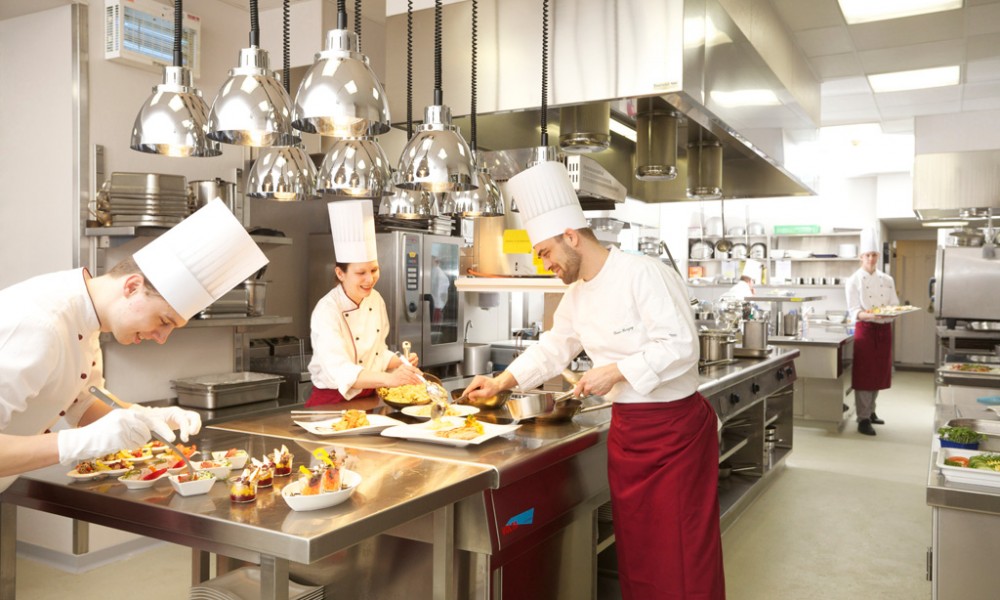Hotel staff: Kitchen personnel

In my hotel personnel series I have already written about several departments;
…now, when I embarked upon the task of writing about the kitchen, it wasn’t quite as easy for me to start.
Why, you ask? The head chef and his or her brigade are hardly the only people in the kitchen. There are also the important washing up team and some interesting equipment which I’d love to have at home….
So let’s take a look at the hierarchy. The head chef is the director of the kitchen. Below him are the sous chef (his standby), the station chef (chef de partie or line cook), commis de cuisine (basic chef), trainees and assistants (dishwashers, kitchen aids). Since the descriptions for the chef de partie are often confused, here is a list of how the division comes about:
Gardemanger – cold cuisine (appetizers, salads)
Entremetier – side dishes (vegetables, rice, potatoes, pasta)
Potager – soups
Poissonier – fish
Rotisseur – grilled/fried/roasted (meat)
Saucier – sauces
Pâtissier – sweets
Tournant – roundsman, swing cook
In large operations, the roles are divided in even greater detail. For example:
Légumier – vegetable chef
Cocottier – egg chef
Friturier – fry chef
As you’ll have no trouble recognizing, all of these terms stem from the French; why is this the case?
As with other technical terms, this system originated in French cuisine, which to this day determines the classification of terms used worldwide (source: Wikipedia).
The washing up team is an important part of every properly functioning kitchen team and should as such be recognized as indispensable. In this case, too, there is a nice technical term from the French: “plongeur / casserolier.”
As to the devices in a kitchen, sometimes pictures say more than words. Take a look at the cover photo for this article: the newly designed kitchen in the Hotel Stefanie.
Beginning with the purchase of the “raw materials,” be it via suppliers or directly in the marketplace, through further processing and concomitant processes, the head chef is responsible.
In this department as well, the team must be able to work in a coordinated manner and the processes need to be discussed as precisely as possible. Good preparation – the term is “mise-en-place” – is a significant prerequisite for smooth, fast processing from the very first “bons” (orders).
Finally, à la carte guests can make for an endless variety of menu combinations. If the collaboration fails here, no guests will leave the restaurant satisfied.
Beginning with tables for two, couples who wish to enjoy a romantic dinner, and running the gamut all the way to weddings and catering, the kitchen personnel has a broad spectrum to serve. Doing justice to everyone is surely an art unto itself!










